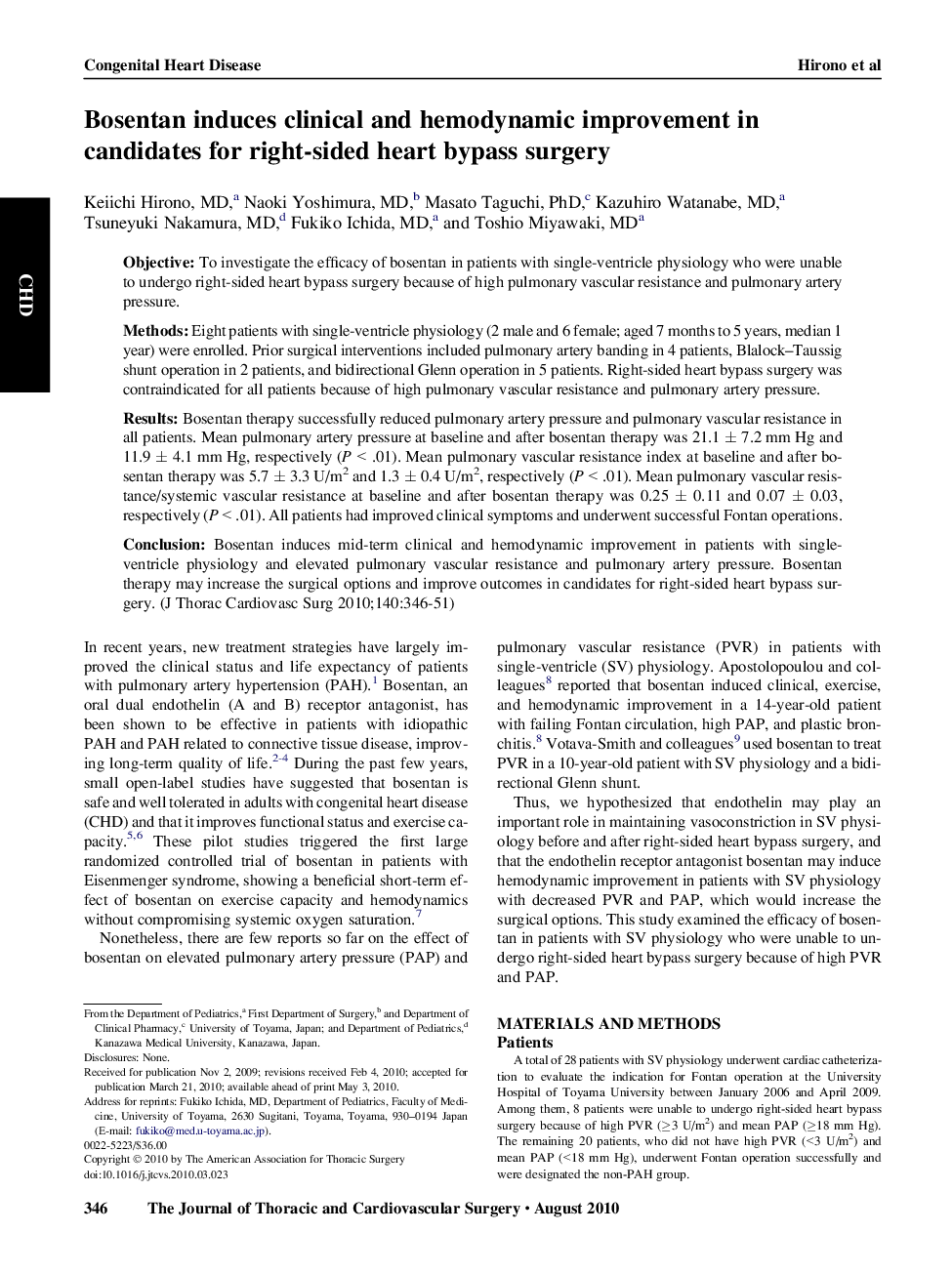| Article ID | Journal | Published Year | Pages | File Type |
|---|---|---|---|---|
| 2983753 | The Journal of Thoracic and Cardiovascular Surgery | 2010 | 6 Pages |
ObjectiveTo investigate the efficacy of bosentan in patients with single-ventricle physiology who were unable to undergo right-sided heart bypass surgery because of high pulmonary vascular resistance and pulmonary artery pressure.MethodsEight patients with single-ventricle physiology (2 male and 6 female; aged 7 months to 5 years, median 1 year) were enrolled. Prior surgical interventions included pulmonary artery banding in 4 patients, Blalock–Taussig shunt operation in 2 patients, and bidirectional Glenn operation in 5 patients. Right-sided heart bypass surgery was contraindicated for all patients because of high pulmonary vascular resistance and pulmonary artery pressure.ResultsBosentan therapy successfully reduced pulmonary artery pressure and pulmonary vascular resistance in all patients. Mean pulmonary artery pressure at baseline and after bosentan therapy was 21.1 ± 7.2 mm Hg and 11.9 ± 4.1 mm Hg, respectively (P < .01). Mean pulmonary vascular resistance index at baseline and after bosentan therapy was 5.7 ± 3.3 U/m2 and 1.3 ± 0.4 U/m2, respectively (P < .01). Mean pulmonary vascular resistance/systemic vascular resistance at baseline and after bosentan therapy was 0.25 ± 0.11 and 0.07 ± 0.03, respectively (P < .01). All patients had improved clinical symptoms and underwent successful Fontan operations.ConclusionBosentan induces mid-term clinical and hemodynamic improvement in patients with single-ventricle physiology and elevated pulmonary vascular resistance and pulmonary artery pressure. Bosentan therapy may increase the surgical options and improve outcomes in candidates for right-sided heart bypass surgery.
